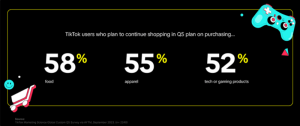In today’s martech landscape, there are just over 5000 marketing technology companies, dubbed the ‘Martech 5000.’ The categories of martech revolve around five major themes:
- Advertising & Promotions
- Content & User Experience
- Social & Relationships
- Commerce & Sales
- Data & Management
Industry professionals often refer to the programs used to perform daily business activities as a “stack.” This buzzword was first coined by tech companies to indicate a group of programs used to create a single web or mobile application, and the term “stack” is now used more broadly to indicate a group of programs or services that help a business unit achieve its goals.
With the seemingly daunting number of options available, it can be difficult for businesses to decide which stacks are right for their business needs, especially now with teams working remotely. If your distributed teams are having a hard time collaborating effectively, it might mean that your business needs to take a look at its current marketing technology.
The first step toward finding a solution may be to take inventory of what tech is working and not working for your teams, and try to categorize them into one of the five buckets. If you’re not quite sure where to begin, keep reading for some starter points on what key areas your teams can review and optimize.
Advertising & Promotions
Online advertising builds brand awareness and is usually one of the earlier steps in the buyer’s journey. Digital advertising gives you more freedom and control over your budget and execution versus traditional advertising. Google’s Display Network reaches over 90% of internet users globally and is one of the largest and most popular online advertising platforms available.
Another perk of Google Ads is that you can manage user access within a single ad account. This is a great option for businesses that have teams working away from the office because you can allow multiple users to access a single account. If your team is struggling with generating leads, take a look at your advertising efforts. It may be that you haven’t found the right tool to reach your customers.
Content & UX
The adage, “Content is king” is truer now than ever before. The longer you can capture your audience’s attention with your content, the more likely you can convert them into customers.
If in-house content creation isn’t your strong suit, consider our content marketing services. We offer content strategy, design, and implementation, which may be a good option to consider for teams that don’t have the creative or technical capabilities to collaborate on cohesive content creation.
User experience, or UX for short, is equally as important as your content, because if your audience cannot experience your assets the way they are meant to be experienced, then you may lose potential customers. Adobe Creative Cloud offers a host of affordable content creation and UX programs to create professionally designed assets. Additionally, Adobe works on a cloud system, which makes it easy for teams to collaborate and design together.
Social Media
The social media landscape is forever changing. Facebook, Instagram, Pinterest, YouTube, and now TikTok… the list goes on. Marketers of the early-to-mid 2010s pushed the idea that in order to be successful, businesses should be on all major social media apps. However, this notion doesn’t ring true anymore.
Different types of customers are using social media apps differently. If your business is trying to boost curated, personalized e-commerce merchandise, then being on an app like Instagram may make more sense than having a general business listing on Facebook. If you’re a service business, consider a video platform like YouTube or TikTok to show your audience the value of what you do in a fun and engaging way.
Loomly and Hootsuite are two popular tools that allow teams to organize, schedule, and track posts for different social media platforms. Consider a social media planning tool if your business is struggling to create or post content on a regular basis.
E-Commerce & Sales
Whether your business relies on e-commerce or brick-and-mortar stores, sales will always be the most important indicator of success. If your customers aren’t buying your offerings, then you may want to evaluate how they’re experiencing your goods and services.
There are many e-commerce platforms on the market today, but one that is most popular is Shopify. Shopify is great for distributed teams because of how easily it integrates within other apps and platforms. For example, if you’re on the e-commerce sales team and you want to incorporate Shopify into your company’s website, you can easily collaborate with the website development team for seamless integration.
Data & Management
Measurable data is the key to understanding the impact of your marketing activities. Metrics such as conversion rate, click-through rate, bounce rate, and website traffic will be important to discover what activities are working and where there’s room for improvement. Google Analytics is a great starting point for data collection and measurement. It allows you to track virtually every aspect of customer behavior and develop comprehensive insights from this data.
These insights will help inform decision-making over time, but it is crucial to keep this data safe for all users. As businesses work to digitize faster, cyberattacks increase as well. Distributed network security is vital for teams working remotely to help keep customer data and sensitive information secure.
Having a variety of martech tools will help boost productivity across the board and might even lead to discovering new business insights. The array of options may seem endless when it comes to martech solutions, but with enough research, time, and trial, your teams will be choosing the right tools in no time.
Business & Finance Articles on Business 2 Community
(15)
Report Post





